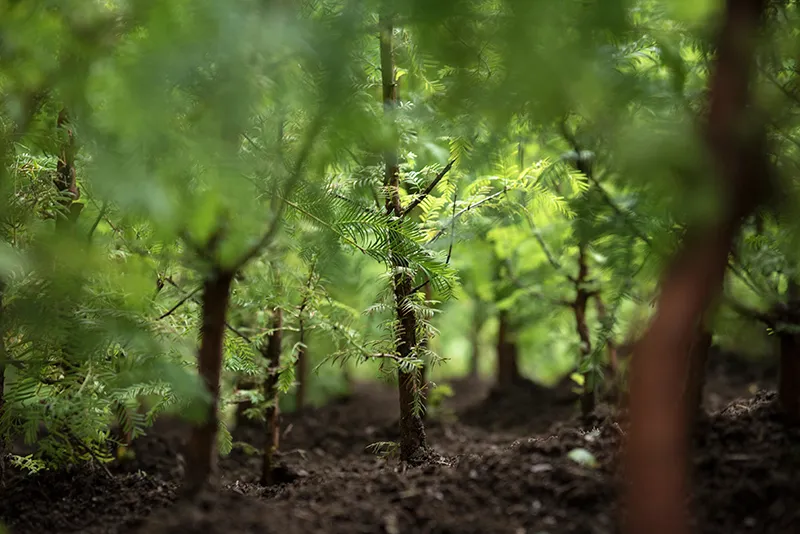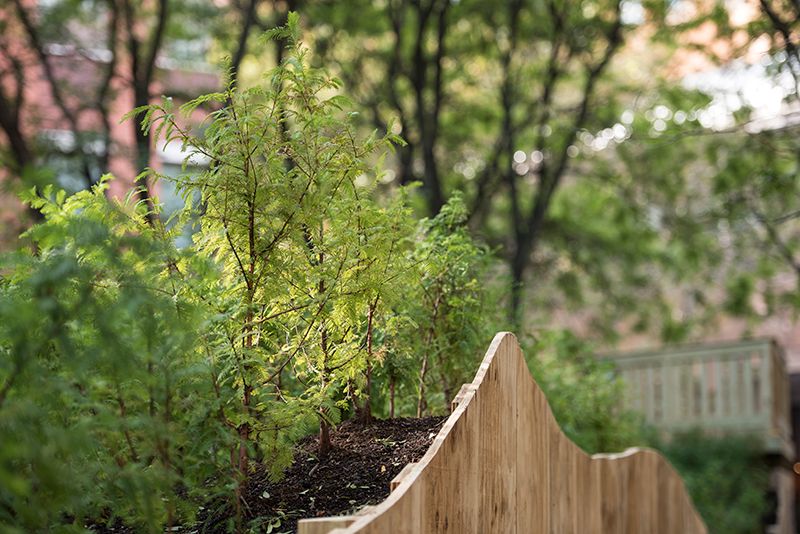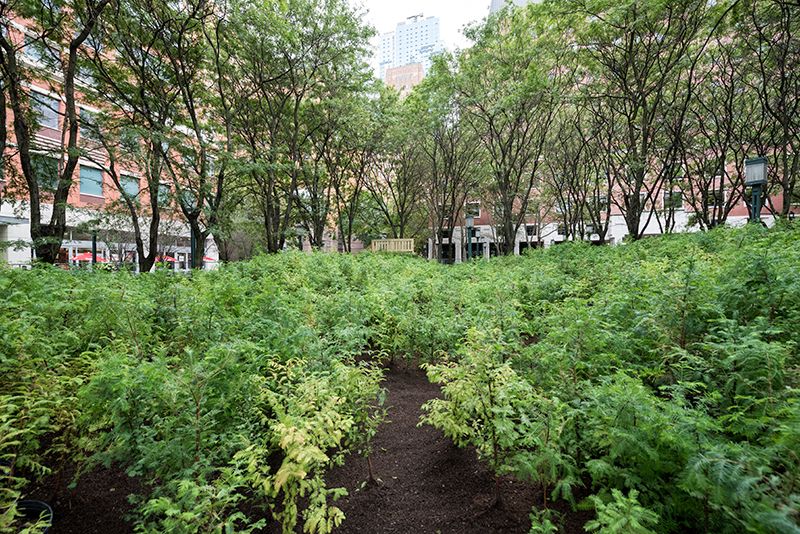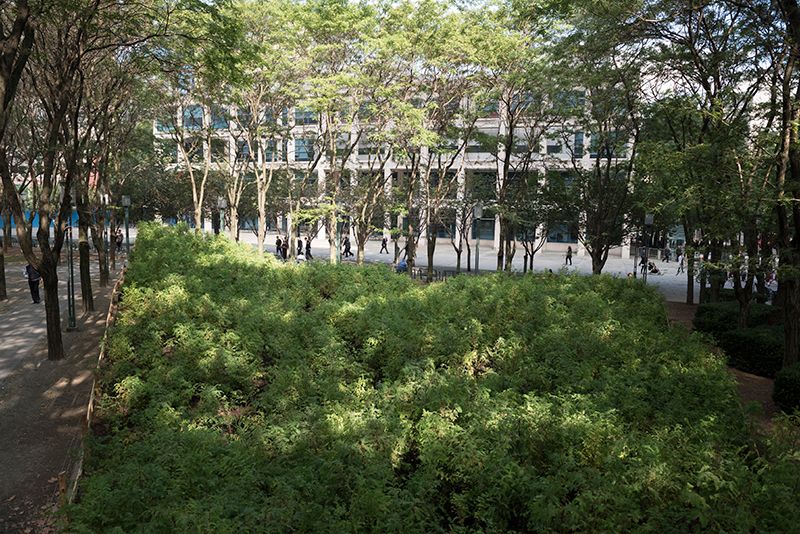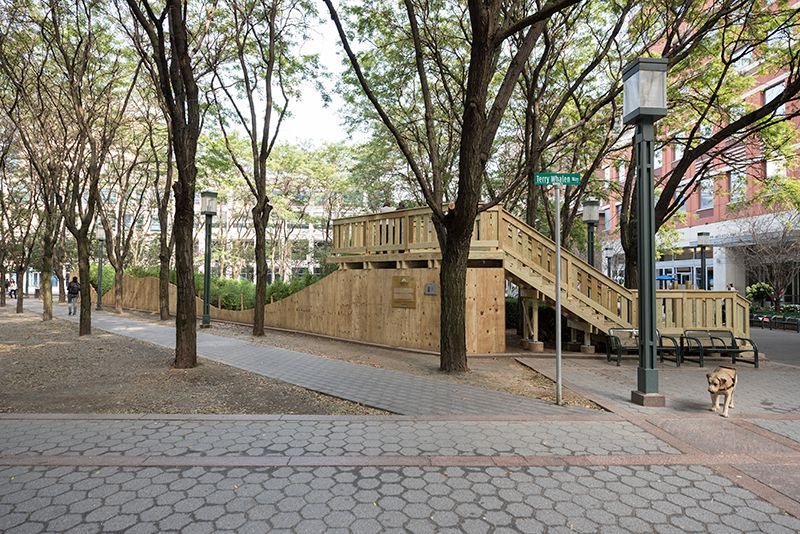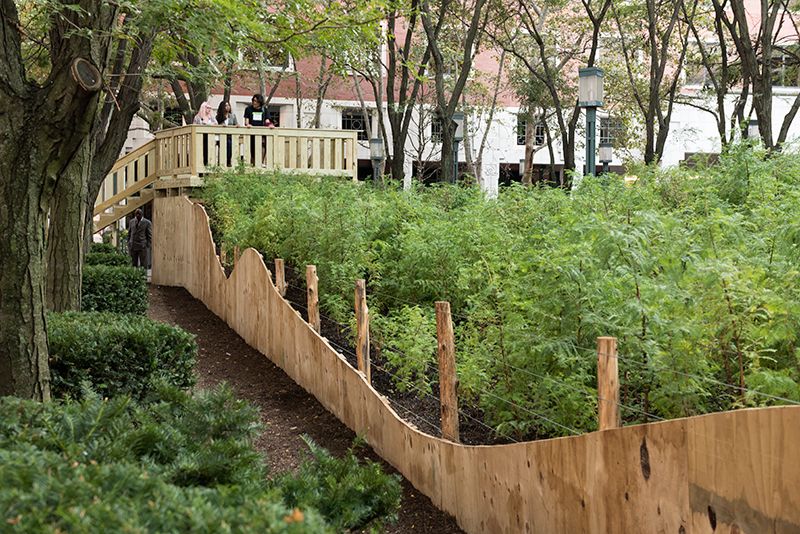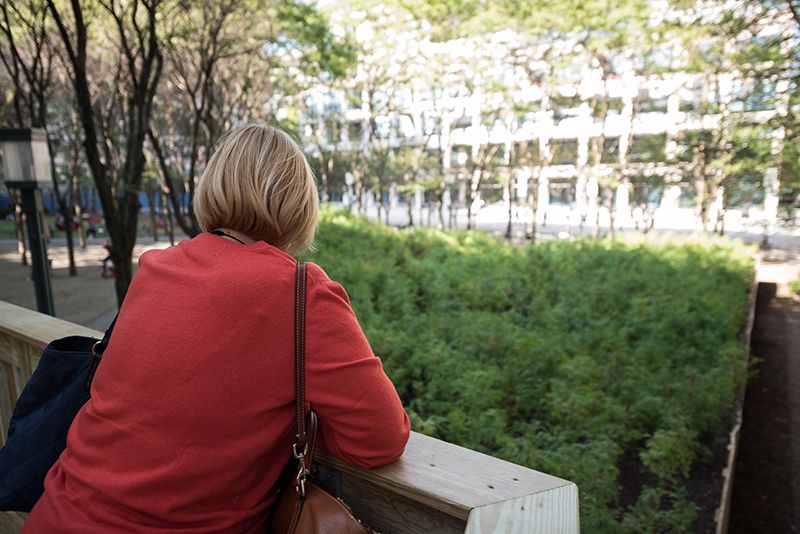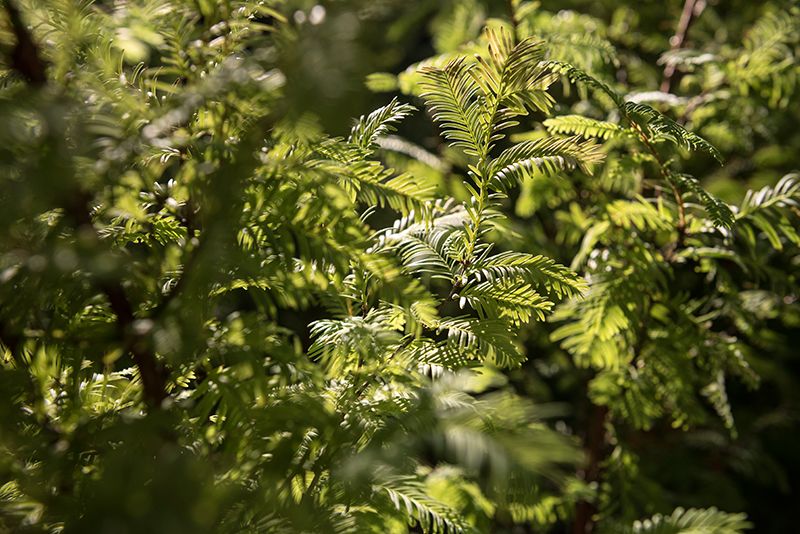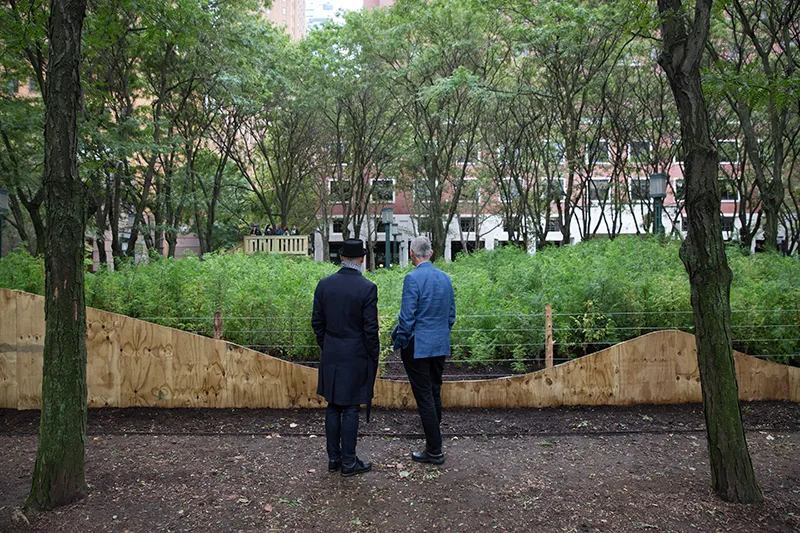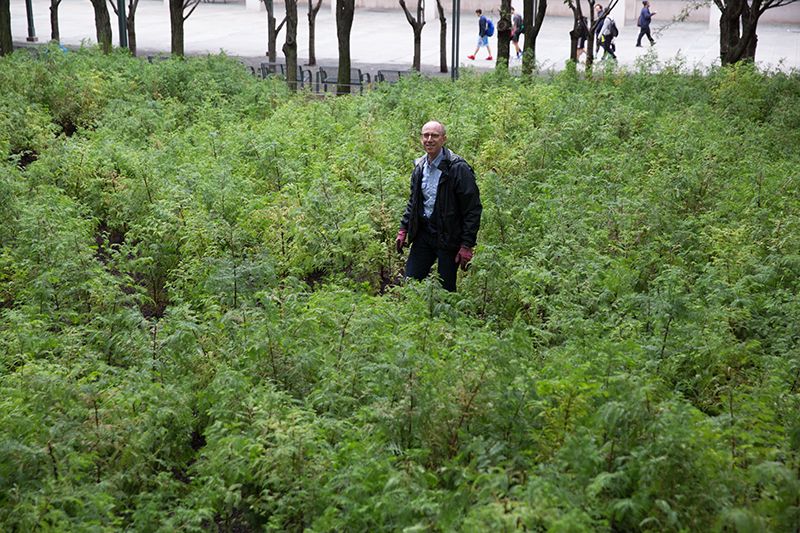A Miniature Living Redwood Forest Springs Up In Brooklyn
Artist Spencer Finch explores landscape by building a tiny, scale replica of a California grove
The thought of a redwood forest evokes visions of cathedral-like groves of trees as tall as skyscrapers. Typically, these trees don't share space with actual skyscrapers. Yet that's exactly what artist Spencer Finch has done with "Lost Man Creek," a recreation of a 790-acre portion of Redwood National Park in the heart of Brooklyn.
When he was asked to create an installation for the MetroTech Commons in Brooklyn, Finch says he was intrigued by the idea of laying a landscape over the landscape that was already there.
"I wanted something that was totally different from the landscape in New York," says Finch, who partnered with the Save the Redwoods League to select the section of park to recreate. "I wanted to take something from 3,000 miles away, an environment that was something New Yorkers don't typically experience, so they would be transported to a place that is far away."
Of course, to put a forest in a city, it must be scaled down. The living installation's trees and topography are 1:100th the scale of the actual California forest. The trees in California range from 98 to 380 feet tall. The approximately 4,000 baby dawn redwoods planted by volunteers in the center of the commons are one to four feet tall.
In a video about "Lost Man Creek," curator Emma Enderby of Public Art Fund, the nonprofit presenting the work, says that visitors will first be struck by the undulating wooden retaining wall surrounding the installation. Then, as they get closer, they'll see a forest writ in miniature.
"A number of our volunteers, who are New Yorkers—born here, grew up here—said to me this is something that they have never experienced—forests like this," Enderby says in the video. "Or never understood the scale of a forest like this."
The tiny trees spread their needles under the canopy of full-scale trees that live in the commons. The redwoods' roots dig into dark soil that ripples, dips and mounds in echoes of the land beneath the trees that inspired the installation.
The dawn redwoods (Metasequoia glyptostroboides) of the installation aren’t the same species as the coast redwoods (Sequoia sempervirens) of California and Oregon. But they are members of the sequoioideae subfamily and were named for their resemblance to the coast redwoods. Dawn redwoods were once believed to be extinct, but a forester stumbled on a forgotten grove in Southwest China. They are now popular ornamental trees planted around the world.
Finch gleaned information about the canopy height, location of individual trees and the topography of an area around the real Lost Man Creek Trail in Redwood National Park from data collected by NASA. "The [Brooklyn] site was gridded out so we had a kind of formula for planting each of the trees," he says. Each planted sapling represents a full-sized counterpart. Blocks of a lightweight material called geofoam underlie the elevation changes in the installation. A drip irrigation system that switches on every half hour snakes though the soil and keeps the saplings well watered.
The living nature of the installation means that it will change with the seasons. "These are dawn redwoods and they are deciduous. They will lose their leaves this fall and then they'll come through again in the spring," Finch says. The winter experience will be more skeletal, as if the redwood forest had burned.
When the exhibition closes in the spring of 2018, the redwood saplings will all find new homes.
The spring's growth spurt will present an additional challenge for the installation. Since these are saplings, they will grow enthusiastically. A major trim will be needed to cut them back to scale with the California forest. "It becomes a little bit of a massive bonsai project," Finch says.
Finch's inspiration for the project stems from his abiding fascination with landscapes. He says that other attempts to capture a landscape, by disciplines that range from 19th century landscape painting to landscape design, inform his approach to much of his work. He has measured changing patterns of sunlight in Emily Dickinson's garden with a light meter, then recreated those values with fluorescent tubes wrapped in gel filters. For an installation at the High Line in New York City, Finch photographed the surface of the Hudson River as it runs west of the park. He then created panes of glass in the exact color pulled from a pixel in each of those photos. This kind of deconstruction of landscapes is one way to really focus on natural phenomena.
"Because ["Lost Man Creek"] is miniature and a model, it has a connection to the tradition of landscape painting," he says.
A landscape artist is not a photographer. The brush of a painter can capture something fleeting about the way that light and color play over leaves or hills. But painters can also choose to depict a kind of perfect landscape that never really existed. The Hudson River School, a name that refers to a group of New York City-based landscape painters that sprung up in the mid 19th century, is known for this type of idealized depiction. The painters, including Albert Bierstadt and Thomas Cole, were captivated by the “untamed” nature of America’s landscapes. Of course, their notions of the wilderness and the ideal West ignored the long presence of Native Americans in the landscapes they painted. The school’s work also helped fuel the American preservation movement that gave rise to the national park system.
It is this intermingling of politics, social movements and art that inspires Finch. "Landscapes are interesting to me on an art level and also a socioeconomic level—what they meant at the time," he says. Even though redwood trees have significance in the history of environmental movements, Finch’s purpose with “Lost Man Creek” is more about finding a different way to capture landscapes. "My attachment to the idea was really to create a living landscape," he says. “A landscape I found intriguing.”
Finch hopes the 1:100th-scale forest inspires some of the appreciation and majesty that the real thing provokes. He says he hopes visitors feel “on some sort of level, a tiny micro-wonder of what you feel like when you are in a redwood forest.”
Spencer Finch’s “Lost Man Creek” is on display at MetroTech Commons, between Jay Street and Flatbush Avenue at Myrtle Avenue in downtown Brooklyn. The installation runs through March 11, 2018.
